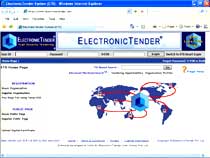 |
| Striding higher: Indian code-jocks
are gaining acceptance in Japan as well |
The world, it appears, is
finally becoming the oyster for Indian techies! Fresh from their
conquest of Silicon Valley (the original one), this breed is now
looking east-at the Land of the Rising Sun. At last count, there
were about 8,000 Indian geeks living and working in Japan. Of course,
it does help that Japan is facing a crunch of nearly 300,000 it
engineers. "Some Japanese companies outsource a lot of their
work to India, so it helps if they have Indian tech staff on their
rolls who can communicate the company's requirements to their suppliers
and vendors here," says Kazuhiko Sujimora, Chief Representative,
India, KDDI Corporation, a Japanese telecom company. The preferred
employers: Mitsubishi, Sony and Yokogawa Electrics among others.
Adding ballast to this trend is the fact that over the last few
years, Japan's insular corporate culture has become more globally
inclusive. "Since 2005, Japan has realised that the global
political situation has changed and that its next destination
should be India. While Japan's strength is in hardware, we are
strong in software. This can make for a very strong marriage between
the two," says Tokyo-based Harsh Obrai, Senior Consultant,
Itochu Techno-Solutions Corporation.
Most of the Indian it professionals in Japan are in their 20s
and 30s, and a majority of them live in Tokyo. In fact, locals
call Edogawa, the city's eastern suburb, Little India. The last
couple of years has seen a mushrooming of Indian shops and restaurants
in the area; there is now even a school for Indian children.
The visa application figures also tell a story; of the 10,000
visas granted annually by the Japanese Embassy and its consulates
in India, 3,000 are for it professionals. So, if you don't mind
mixing your sushi with suji, join in the queue.
-Tejeesh N.S. Behl
AT
THE DOORS OF FOOD DESIGN
This year, the doors of Perception's
conference on "Food and Juice" in New Delhi talked about
food as a design issue. The conference dwelt upon issues like urban
agriculture, greywater (non-industrial wastewater generated from
domestic processes such as washing dishes, laundry and bathing)
management, food distribution and re-appropriation of resources.
"Global food systems are an example of wasteful economic activities
that are offshoots of globalisation. Processed food consume 10-times
more energy than what enters our bodies due to increasing food miles
(distance from farm to food distance) and CO2 emissions attributable
to the transport, processing, packaging and distribution of food,"
says John Thackara, Director, Doors of Perception.
Participants from 25 countries talked about their own contribution
and design solutions, which have worked even in a small way to
address the growing crisis over food and energy.
The conference which was "all about action, not talk"
required participants to go on water mapping excursions and on
street food tours to study urban agriculture, langar and wastewater
management and even visit local farms.
-Pallavi Srivastava
Call
of the Sea
It's not only the Vijay Mallyas
and the Gautam Singhanias of this world who own yachts and luxury
boats. Dozens of lawyers, investment bankers, doctors and young
CEOs are joining the club. "A new generation of wealthy Indians
is turning its attention from top-end cars to private yachts,"
says Malav Shroff, Director of the recently concluded Mumbai International
Boat Show, adding: "A yacht provides the ultimate luxury environment
for work and play. And the vast Indian coastline, with its sea forts
and virgin beaches, offers some great cruising options."
The demand for leisure boats is huge. "From just four to
five yachts in 1994, there are today close to 130 of these boats,
a majority of them owned by individuals," says Aashim Mongia,
Founder, West Coast Marine, a company that sells and maintains
yachts. Experts say the boating industry in India will, potentially,
be worth $1.5 billion (Rs 6,600 crore) in the next 10 years. Already,
world leaders in the industry-like Ferretti of Italy, Bayliner
of the US, Princess of the UK and Gulf Craft of UAE-have established
beachheads in the country. Speaking to BT from Dubai, Erwin Bamps,
Executive Director, Gulf Craft, says: "We sell one yacht
every three weeks (in India)."
To further boost the growing demand, these companies are entering
into tie-ups with banks to offer loans and are also exploring
the possibility of promoting fractional ownership of yachts. Mongia's
West Coast Marine has tied up with yes Bank to offer yacht financing.
Mongia explains that the bank provides finance up to Rs 30 lakh
for 3-5 years at 18 per cent per annum. At last count, the country
had 83,000 millionaires. The economy is galloping along at over
8 per cent per annum; so it's a fair assumption that the number
of millionaires is also growing at a fair clip. No wonder boat
makers are so bullish about India.
-Anusha Subramanian
Q&A
"India is a Big Growth Opportunity"
 |
Become an important player in
India over the next 10 years. |
GE money, the retail financial
services arm of General Electric, is present in 54 countries. It
has a sizeable business in India too, but it is not a bank like
it is in many countries. Last fortnight, its President and CEO,
Dave R. Nissen, was in India. He spoke to BT's Shalini S. Dagar.
Excerpts:
How important is India to GE Money?
We have identified India as an IB (imagination breakthrough),
which is a term that focusses a spotlight on some of our biggest
growth opportunities. These are reviewed on a regular basis by
the Chairman of GE. We have worked hard on a programme we call
Fast Forward which has identified 10 areas we believe are critical
for GE Money to become an important player in India over the next
10 years.
Are current ownership and expansion regulations constraining
your growth?
If there are changes in the banking ownership rules, then we
will take a hard look at that.
What are your key concerns in the global retail financial
services space?
We are quite concerned about the US mortgage market where there
is a bubble in near prime and sub-prime markets. European economies
are doing quite well. The biggest worry in Asia we have is about
bubbles in credit cards. It happened in South Korea and Taiwan.
Will it happen in China and in India? We don't think so, but there
is high growth and intense competition in India.
How much of a threat is rising interest rates to consumer
demand?
Higher interest rates are always a threat to consumer demand,
but central banks have done a good job till now of increasing
rates without killing gdp growth.
TOP
OF MIND
Biometric ATMs Make
Their Mark
What are they? Biometric ATMs, that allow users to use
physical attributes like a palm, finger or face recognition and
voice recognition software to access a machine.
Who's offering them? Andhra Bank has announced plans
of launching a network of 75-100 biometric ATMs across the country
over the next 2 years. Incidentally, the Jalgaon People's Cooperative
Bank was the first in the country to launch such cards three years
ago. ICICI Bank and Citi also offer this service. All of them
offer the fingerprint option for now.
Why are they useful? Well, for one, they're more secure;
secondly, they're easier to use as one doesn't have to remember
PIN and CVV numbers. Then, in a country like India, where illiteracy
levels are high, ATMs that rely on fingerprints obviously make
life easier for everyone concerned.
Going forward...: "We're in talks with over a dozen
banks," says Abhay Khinvasara, CEO of Axis Software, which
created the software for the ATMs. And several of them plan to
launch such ATMs in urban areas.
-Anand Adhikari
Tendering
On The Net
 What
is it? A web-based tendering platform with various applications
built in that totally removes the necessity of manually handling
tenders at any stage. What
is it? A web-based tendering platform with various applications
built in that totally removes the necessity of manually handling
tenders at any stage.
Who's using it? Delhi State Industrial and Infrastructure
Development Corporation, Delhi Metro Rail and Pondicherry Public
Works Department Corporation.
Why is it useful? It lowers the costs for both the party
issuing the tender as well as that of the participant. It is also
totally transparent and secure.
Who is offering it? There are several small players providing
e-tendering solutions on an ad hoc basis, but Electronic Tender
is the only company offering a comprehensive range of solutions
and also offering the same on ASP (Application Service Provider)
basis through its vendor Chennai Interactive Business Servces
in India and YSER Inc. in the US.
What's the value of e-tendering in India? Above Rs 8,000
crore.
-Nitya Varadarajan
ECONOMY
WATCH
GLOBAL OIL PRICES
Status: $59.60 per barrel in Feb. '07.
Impact: Crude oil prices are up marginally over the last one
month, but if one looks at the figures for the last six months,
a declining trend becomes evident, which is a good news for Indian
economy. This will not only ease the pressure on the country's
foreign exchange reserves by way of a reduced oil import bill,
but also help tame the inflationary pressure.
INFLATION
Status: 6.05 per cent for the week ended February 17,
2007.
Impact: Rising inflation has been the single biggest contributor
to rising interest rates in the economy. If the inflation keeps
growing at over the RBI-projected figure of 5-5.5 per cent, it
can impact the country's growth story.
-Compiled by Anand Adhikari
P-WATCH
A bird's eye view of what's hot and what's not on the government's
policy radar.
|









 What
is it? A web-based tendering platform with various applications
built in that totally removes the necessity of manually handling
tenders at any stage.
What
is it? A web-based tendering platform with various applications
built in that totally removes the necessity of manually handling
tenders at any stage.